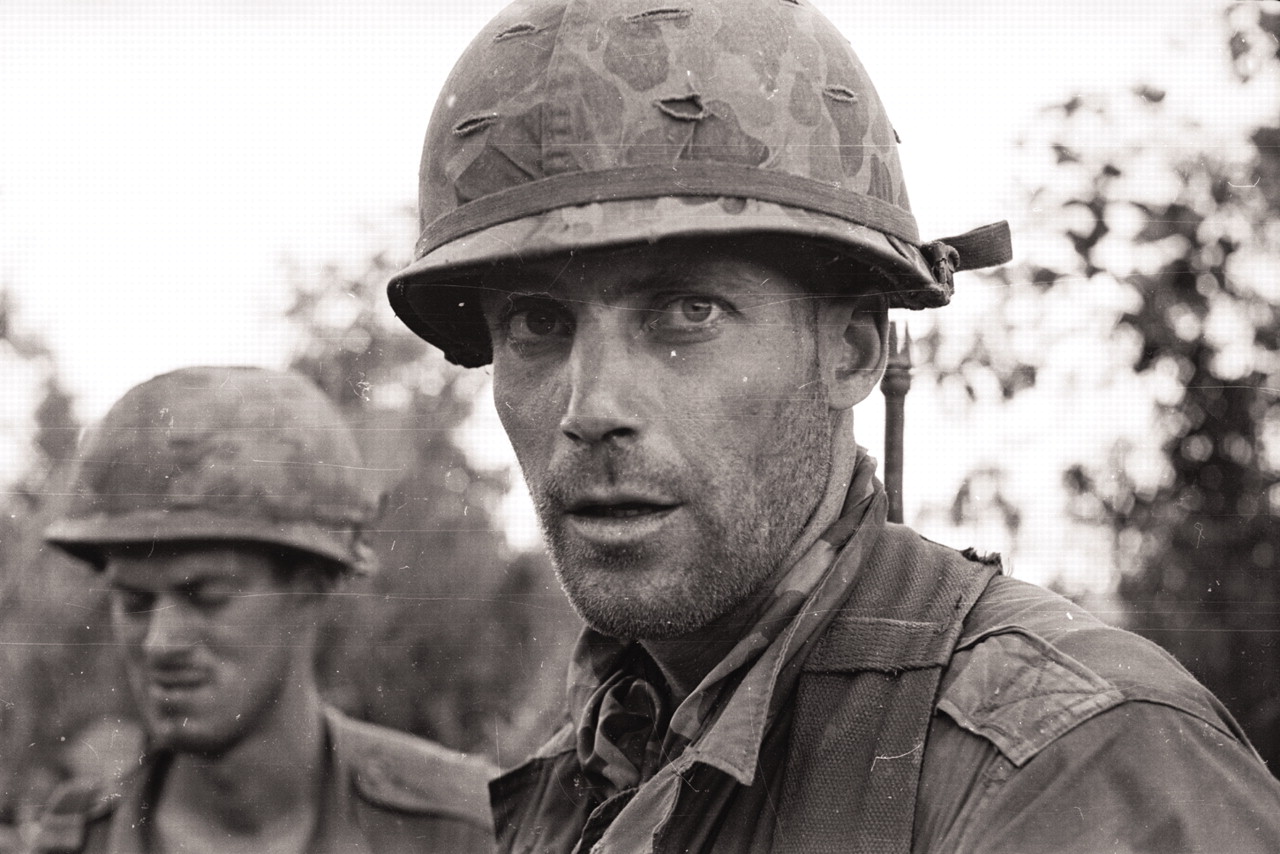Novels like
The Red Badge of Courage served as makeshift textbooks for young psychiatrists when they tried to help Vietnam veterans who were traumatized by what they had seen and done.
Matthew J. Friedman, M.D., Ph.D., who in 1973 was at the start of a long career in the Veterans Administration Health System (VA), remembers, “People were flooding the clinics, demanding that we do something for their distress. We had no clinical terminology for what we were seeing. Their suffering was so raw.”
Robert Rosenheck, M.D., at 26, was a resident at VA Medical Center in West Haven, Conn., who found himself trying to find a way to alleviate the pain of men his own age who had fought a war he had protested and been able to avoid.
Terence Keane, Ph.D., turned to accounts of the effects of the Holocaust on survivors to try to understand why the problems of substance abuse were so extreme in returning Vietnam veterans.
In March 2004 Thomas Horvath, M.D., reminded members of the House Veterans Affairs Subcommittee on Health of the inadequacy of psychiatric training at that time.
“[I]n a three-year residency training from 1973 to 1976 at the Palo Alto VA, I had no instruction whatsoever in military medicine or postdeployment psychiatry [and had not] even participated in an honest discussion of the pain of returning Vietnam veterans.”
Other factors complicated the efforts to help. Some Vietnam veterans had developed such a sense of distrust of the government that they refused to enter the VA clinics.
“We had a phrase for it,” said Friedman. “They couldn’t get past the bricks.”
Nor could they fit comfortably back into a society that was eager to forget a divisive war and unwilling to acknowledge the lingering pain of its combatants.
“They were so reviled,” said Friedman. “A veteran told me that he felt he had to concoct a story about where he had been for the previous year.”
Psychiatrists found it difficult to hear about the atrocities that were a primary source of anguish for many veterans.
Rosenheck said a turning point came when he read an article by Sarah Haley, “When the Patient Reports Atrocities: Specific Treatment Considerations of the Vietnam Veterans” in the Archives of General Psychiatry in 1974.
“You had to be open to the possibility that you could have done the same thing as the patient,” he said. “You had to be able to absorb without shutting off.”
Treatment, Research Evolve Slowly
Changes in mental health treatment for the Vietnam veterans came slowly and on many fronts.
In December 1970 Robert Jay Lifton, M.D., a psychiatrist and antiwar activist, helped initiate weekly “rap groups” at the New York office of the Vietnam Veterans Against the War. In Home From the War, published in 1973, he called the process “a dialogue between [mental health] professionals and veterans.”
Both Keane and Friedman established groups for veterans. Friedman’s wife, Gayle Smith, who had been a nurse in Vietnam, ran a group in their apartment for the veterans who refused to go to the VA clinic.
John Talbott, M.D., then director of Manhattan State Hospital and now retiring editor of the APA journal Psychiatric Services, became involved in the Vietnam Generation Study and told author Wilbur Scott, “I did a survey in my own hospital and found that most Vietnam veterans did not [indicate at admission] that they were Vietnam veterans. I realized that we had a large problem—with the recognition of the syndrome, with the recognition of people, with the identification of self, and so forth.”
Talbott, Lifton, and Chaim Shatan, M.D., began organizing support for the inclusion of what eventually would be called posttraumatic stress disorder (PTSD) in the DSM-III.
In January 1978 an APA committee chaired by Robert Spitzer, M.D., accepted a description of the disorder that applied to Holocaust survivors and combat veterans.
APA’s acknowledgement of PTSD helped ensure passage of a much-contended bill sponsored by Sen. Alan Cranston (D-Calif.) that provided for readjustment counseling for Vietnam veterans at centers in the community.
VA Secretary Max Cleland, a Vietnam veteran, opened and dedicated one of the first centers in 1979.
In 1983 Congress commissioned the National Vietnam Veterans Readjustment Study to examine various issues related to the prevalence of PTSD among Vietnam veterans. Keane, who was the VA’s study administrator, said, “The study was the first time any country had investigated the psychological and social impact of combat on its citizens.”
The following year, members of Congress mandated establishment of the Chief Medical Director’s Special Committee on PTSD, with the stipulation that reports go directly to them.
Friedman, who became the committee’s chair, remembers, “Leadership of this committee transformed me from a rural psychiatrist doing his own thing with Vietnam vets in Vermont and New Hampshire to someone who had a national perspective about all VA clinical, research, and education programs concerning PTSD.”
The VA established the National Center for PTSD in 1989. Friedman is its executive director.
In written testimony to the VA House Subcommittee on Health, he described six ways in which the situation has improved in terms of mental health treatment for veterans since the post-Vietnam era.
Friedman noted strong collaborations between the VA and the Department of Defense, the availability of the National Center’s “Iraq War Clinicians’ Guide,” and the maturation of PTSD treatment as a field.
The difficult struggles to learn how to help Vietnam veterans have produced other positive results.
U.S. Leads World in PTSD Treatment
The United States has become an international leader in the treatment of PTSD as a result of work done by VA researchers, said Keane. He is a past president of the International Society for Traumatic Stress Studies and director of the National Center for PTSD’s behavioral science division at the VA Boston Healthcare System.
VA research has “led the way to other kinds of trauma studies,” said Friedman. Formerly an illness had been named for the kind of trauma experienced, such as the rape/trauma syndrome. Now, he said, clinicians and researchers see the similarities among people who have experienced different kinds of trauma.
The three men who began their careers treating Vietnam veterans all work for the VA today.
Keane said that the VA has been “remarkably supportive of psychological and behavioral health research” and is a “model institution in terms of health care quality and performance.”
For Rosenheck, who is director of the VA Northeast Program Evaluation Center, his experience with Vietnam veterans offered a way of thinking about and ultimately trying to repay the debt that all Americans have to their veterans.
He also claims a special obligation.
“In 1979,” Rosenheck said, “when a severely depressed patient in my day hospital began to talk about his memories of the liberation of the concentration camps, it struck me that, as a person of Jewish descent and identification, I was working in an institution that existed as compensation for the sacrifices of soldiers whose service had protected me personally from the Holocaust, and everyone I was related to, from genocide.”
Numerous publications about PTSD can be accessed at the Web site of the National Center for PTSD at www.ncptsd. ▪

